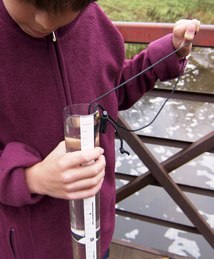|
April 2018
The
Basin Alliance for the Lower Mississippi in Minnesota
(BALMM) will meet Wednesday, April 18, from 9 a.m. to noon at the Minnesota Pollution Control Agency, 18 Wood Lake Drive
S.E., in Rochester, Minn.
Agenda as follows:
-
9 a.m.: “How Do U of M Nitrogen Recommendations Work in On-Farm Trials” – Gregory Klinger, University of Minnesota Extension Educator
- 10:15 a.m.: Break
- 10:30
a.m.: “The P in WRAPS (Watershed Restoration and Protection Strategies)” –
Scott Lucas, watershed project manager, Minnesota Pollution Control Agency
- Noon:
Adjourn

How do University of Minnesota
nitrogen recommendations work in on-farm trials? From 2015 to 2017, farmers and
agronomists from across southeastern Minnesota collaborated with the Minnesota
Department of Agriculture, University of Minnesota Extension, and Southeast
SWCD Technical Support Joint Powers Board to install nitrogen management trials
on about 150 farm fields. These trials examined whether corn yields and
water quality could be sustained or improved by altering nitrogen fertilizer
rate or timing, or by using a nitrogen-stabilizing product. After 3 years of
trials, interesting results have emerged on the effect of nitrogen management,
weather, and soils on water quality and corn yields. Greg Klinger from the
University of Minnesota
Extension will discuss these results at the April 18 BALMM meeting.
|
Up until recently, the Watershed Restoration and Protection
Strategies (WRAPS) that have been developed for Minnesota have been based
largely on restoration activities for watersheds with numerous impaired waters,
focusing on how to bring these waters back into conditions that meet clean
water standards. However, strategies have not focused on how to protect waters
that are currently in good condition.
In the Pine River
watershed in north-central Minnesota, most of the streams and lakes have
good water quality, and easily meet current standards. Strategies needed to be
developed and used that would keep water quality in its current state, and focus
efforts on areas of the watershed where the most benefit to all resources could
be gained. This involved the use of various land use models, as well as studies
done by agencies such as the Minnesota Dept. of Natural Resources, Board of
Soil and Water Resources, and Department of Health.
By combining the outputs of the models, as well as water
quality, hydrological, forest cover, and land use datasets, the partners were
able to target specific water bodies and practices that could best maintain
good water quality while providing multiple ecological benefits to the
watershed.
Scott Lucas, MPCA watershed project manager, will focus on
this example of protective strategies at the April 18 BALMM meeting.
Proposals for funding 2019-20 projects are due May 31 at 4 p.m.
to the Lessard-Sams Outdoor Heritage Council. The
council expects about $100 million to be available for projects that protect,
restore and enhance wetlands, prairies, forests, and habitat. See the full
request for proposals on the council website for details.
The
council makes annual recommendations to the Minnesota Legislature on
appropriations from the Outdoor Heritage Council, which is funded by the Clean
Water, Land and Legacy Amendment.
 Spring is here and it is time to gear up for Earth Month activities, neighborhood clean-ups and environmental fairs. Did you know that the Minnesota Pollution Control Agency has free resources to use including display banners and a variety of environmental fact sheets? Call 651-757-2120 today to reserve your materials from the Living Green Resource Center.
The MPCA has publications available for free download. Minnesota residents may also request printed copies of these publications while supplies last. To order copies, contact us by e-mail at resourcecenter.pca@state.mn.us or you may also reach us by phone at 651-757-2120.
The MPCA also offers display materials for use by local units of government, community groups, and educators. These items are available to Minnesota residents for short-term loan (generally, two weeks or less). There is no charge to borrow our display materials. However, borrowers must accept responsibility for displaying items in a secure area and returning them in good condition. The MPCA cannot mail display items, so borrowers must arrange to have the items picked up and returned at our St. Paul office. It is best to reserve displays 4-6 weeks before they are needed.
• To reserve available display items, please contact us by phone at 651-757-2120. You may also reach us by e-mail at resourcecenter.pca@state.mn.us.
• Banners are 6 feet tall, 3 or 4 feet wide, and freestanding. They are lightweight and collapse into a portable canvas bag.
|
 It started in 1998 with 17 volunteers monitoring the health of 22 streams sites in Fillmore County. Today there are more than 400 volunteers and 500 stream sites across Minnesota. The data they collect are indispensable to the Minnesota Pollution Control Agency (MPCA).
“Where else do you have continuous data like that? It’s really rare … That citizen component is really important,” said Donna Rasmussen, director of the Fillmore Soil and Water Conservation District, where the Citizen Stream Monitoring Program started 20 years ago.
Volunteers in this program adopt a stream site, tracking how clear the water is weekly during the summer. They use a simple tool called a Secchi tube to measure the clarity, reporting the measurements and their observations to the MPCA. The agency then uses the information to help assess whether the streams meet water quality standards designed to make sure they’re fishable and swimmable.
The MPCA is celebrating the 20th anniversary of the Citizen Stream Monitoring Program this year, and produced a video program to recognize volunteers and their contributions to cleaner water. For many volunteers, their observations and opportunities to bring attention to streams are just as important as the data collected.
One of the volunteers in the video program is Richard Betz, a nine-year monitor on a Flute Reed River site in Cook County. “I can report things like this slumping bank I’ve got here. If I wouldn’t have been here, the county soil and water wouldn’t know about this,” he said.
Ruthann Yaeger, an 11-year volunteer on Silver Creek in Olmsted County, said, “More importantly, the Citizen Stream Monitoring Program gives me a base to speak to people about water. And to be able to show them in ways that this impacts our watershed. And it will impact your well.”
With 69,000 miles of streams and more than 14,000 lakes in Minnesota, the MPCA cannot monitor all that water on a continual basis. For some lakes and streams, citizen data are the only data available. For all waterbodies monitored, the data are crucial to tracking long-term trends in water quality, to see if lake and stream health is getting better or worse over time.
If you’d like to be part of this program to help ensure clean water in Minnesota, go to the program’s webpage, or call the MPCA at 651-296-6300 (Twin Cities) or 1-800-657-3864 (Greater Minnesota). The MPCA provides equipment and training, and no experience is needed.
|
Water was a dominant theme when the MPCA recently refreshed its Strategic Plan for the next five years. The agency selected 16 goals that cover air, water, land, cross agency, and excellence. The water goals focus on:
- Reducing chloride (salt) entering lakes, streams and groundwater
- Reducing nutrient pollution of lakes and streams through targeted strategies with local partners
- Reducing pollutants in wastewater and maximizing investments in public infrastructure
As part of the refresh, the agency gathered input from staff and external stakeholders. Some of the key themes shared by external stakeholders and staff included better communication and efficiency.
Based on input from external and internal stakeholders, senior leadership selected a targeted set of goals where the agency can make a difference in the next five years. In addition to water-related goals, they include increased diversity in the agency’s work force, acceleration of data availability online, and improving air quality in population centers. The agency is also focusing on reducing permitting backlogs in air and nutrient pollution in watersheds.
The U.S. EPA recently approved the Total Maximum Daily Load report for the Zumbro River watershed. This type of study determines the total amount of a pollutant that water bodies can receive on a daily basis and still meet water quality standards.
Some waters are in good shape while many need work in the Zumbro River watershed in southeastern Minnesota, according to the TMDL report and accompanying WRAPS document.
This watershed drains 909,000 acres in Olmsted, Dodge, Wabasha, Goodhue, Steele and Rice counties. The landscape is diverse, with most of it used for agriculture. Yet its cities are growing, most notably Rochester, home of the Mayo Clinic. The lakes and streams vary in water quality and the groundwater is sensitive to pollution.
Trout streams here tend to be in good shape and protecting them is critical. Common problems in the watershed include degraded habitat for fish and bugs, increasing levels of nitrogen in streams and springs, and high levels of bacteria and sediment in streams at times.
Recommended strategies include improving fertilizer efficiency, adding perennial and cover crops, controlling erosion, managing stormwater, protecting drinking water, managing waste, and protecting perennial lands.
The MPCA approved the Zumbro WRAPS report in November 2017.
|